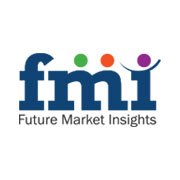Growing concerns with respect to increasing demand, zero defect and on-time production has resulted in emergence of smart production technology. Advancement in technologies are bringing together industrial value chain functions, such as product design, production planning, production execution, and services. On the other hand, technological advancements have resulted in making production facilities smarter in terms of efficiency, while minimizing defects, waste, and downtime. These types of facilities, classified as smart factories, help gain competitive advantage by making business process more dynamic. Across the supply chain, smart factory includes dynamic systems, intelligent analytics, smart machines, savvy workers, customers, and clients. Similarly, advances in production technologies ensures factories are safer, smarter, and environmentally sustainable.
Browse Full Report@ http://www.futuremarketinsights.com/reports/smart-factory-market
Smart Factory Market: Drivers & Restraints
Demand for customer specific solutions and zero tolerance towards quality issues has prompted manufacturers to develop processes that not only deliver consistency in quality of output but also provide efficient production. Developments in information and communications technology (ICT), increased focus on energy consumption, rising prices and tightening environmental regulationsare the key drivers for the smart factory market. However, restricted access to finance,limited availability ofskilled workers, andlack of standardization are the major challenges of the smart factory market.
Smart Factory Market: Segmentation
On the basis of technology, the global smart factory market is segmented into information technology system, enterprise resource planning, industrial control system and manufacturing execution system. Enterprises resources planning dominates the global smart factory market in terms of revenue due to increase usage of software systems. The information technology system is the second most dominant segment on the basis of technology.
On the basis of application, global smart factory market is segmented into two discrete industry and process industry. These two segments of global smart factory market are sub-segmented; the sub-segments under discrete industry segments are automotive & transportation, packaging, materials & mining, and others, whereas the sub-segments of process industry include pharmaceuticals, food and beverages, oil & gas and others. In terms of revenue, the global smart factory market is dominated by process industry, whilst the CAGR is the highest for discrete industry segment of global smart factory market.
Smart Factory Market: Region-wise Outlook
In developed regions, such as North America and Europe, such facilities help businesses in not only aligning with industry standards but also in complying with government regulations. Also, government and industrial associations of developed countries as well as developing countries are lobbying for smart factories to meet future sustainability needs. Smart factory optimizes the capacity use of machines and helps to reduce the adverse effects on the business.
Request Report Sample with TOC@
http://www.futuremarketinsights.com/reports/sample/rep-gb-446
The global smart factory market is expected to register a double digit CAGR for the forecast period. Depending on geographic regions, global smart factory market is segmented into seven key regions: North America, South America, Eastern Europe, Western Europe, Asia Pacific, Japan, and Middle East & Africa. As of 2015, North America, Eastern Europe and Western Europe dominated global smart factory market in terms of market revenue. Asia-Pacific is projected to account for a dominating share in global smart factory market value exhibiting a robust CAGR during the forecast period, 2015-2025.
Smart Factory Market: Key Players
Major players in global smart factory market are ABB Limited, Rockwell Automation Inc., General Electric, Siemens AG, Schneider Electric SA, and Mitsubishi Electric Corporation.

